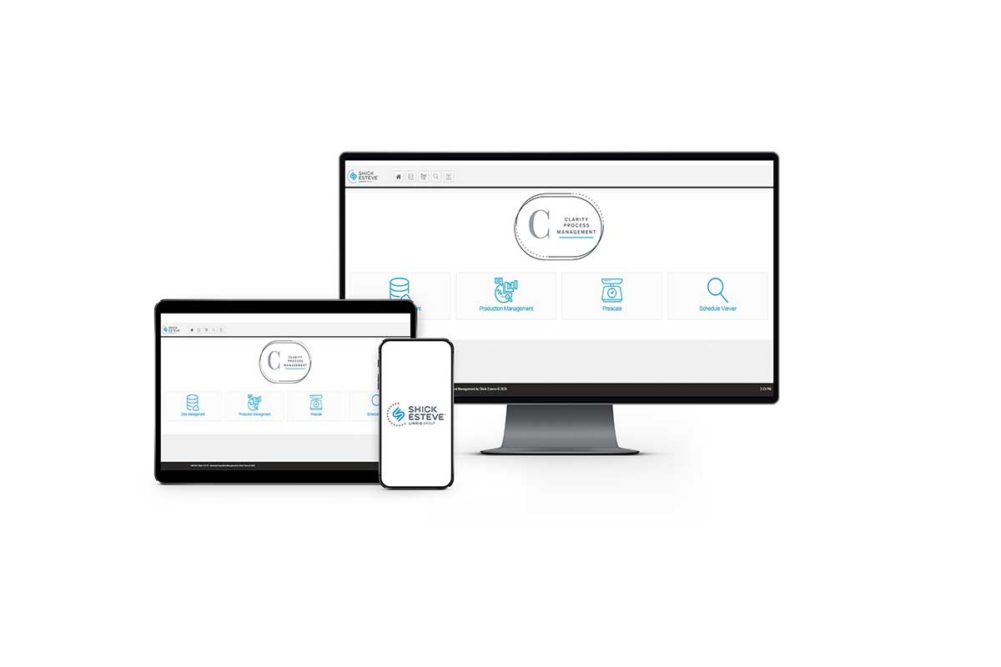
Digital tools take on mental load of ingredient handling in automation
Automation brings the benefits of speed and efficiency to any bakery operation. By removing the human element, bakeries can run not only faster to meet throughput demands but also more precisely even at high speeds. This is even true when it comes to changeovers between products, which hinder production efficiency.
“Changeovers should not be an issue when considering ingredient handling,” said Pieter Van Hoecke, business development manager, North America, Spiromatic. “Flexible technologies like vacuum conveying allow the drawing of bulk ingredients from different sources, while automated micro ingredient platforms can automatically prescale batches of micro ingredients that can then automatically be conveyed to the final mixers. These can automatically switch from one recipe to the next.”
The key to all of this is digital tools that take on the mental load previously placed on operators to manage changeovers of ingredients between production runs. Production management software executes the production schedule automatically, making the changes between ingredients and scaling.
“Spiromatic’s SPEC suite allows complete management of production orders with their breakdowns into batch orders to be executed by the automated system,” Mr. Van Hoecke said. “The required master data — ingredient data, recipe data — is used to convert the batch orders into individual movements of ingredients to their destinations at the mixers.”
Production management software can handle a variety of formulas and recipes and manage the complexity of ingredient combinations, which speeds up changeovers. For ingredients that still must be loaded manually, the software prompts the operator to add in ingredients.
“For a lot of facilities, a changeover can mean a small change that’s hard to catch without the automation,” said Darren Adams, vice president, engineering, The Fred D. Pfening Co. “The production campaign programming is down to the split second whereas if an operator is trying to multi-task, there can be a delay between tasks.”
Digital tools go beyond just production planning, however. While those systems streamline and automate changeovers, data collection can allow baking companies to take their ingredient handling a step further. Mr. Stricker said Shick Esteve’s process management software, which manages production schedules, is its most commonly deployed digital tool. That said, more baking companies are implementing the company’s data management software, which collects and organizes a vast amount of data from the system into an easy-to-read report so operators can identify changes in the operation. These changes can indicate when something might need attention before the line goes down.
“Data management can prevent run-to-failure because it enables bakers to do predictive maintenance rather than preventative maintenance,” said Jason Stricker, vice president of sales and marketing, Shick Esteve. “That ensures not only that you’re not breaking down, but you’re also running at optimal efficiencies.”
Small failures in valves, for example, can cause slight changes in accuracy and dough consistency, variations so small an operator might not notice until the line is near breakdown. Shick Esteve’s system can also be integrated with existing maintenance programs to generate work tickets ahead of equipment failure.
The Fred D. Pfening Co. now offers smartphone apps that can monitor a plant’s inventory levels, the air temperature, process temperature and other parameters. They can link to production data, volumes and inform maintenance plans.
“One of the greatest things it’s done is remove the need for someone to be constantly at the facility,” Mr. Adams explained. “It reduces the amount of time you need to monitor face-to-face.”
These systems can also track ingredient usage, which can improve the operation and eliminate the need for a person to track and record ingredient levels. By relying on a computer to do this, purchasing personnel get more accurate and timely data when ordering new ingredient supply.
“Showing the digital readout of weights on storage units with the help of load cells can open up a lot of flexibility within the system,” said Jerry Murphy, vice president, sales, Gemini Bakery Systems/KB Systems Inc. “Having this data shown and the ability to report to others can reduce costly mistakes of running short on ingredients or even ordering too much.”
Data and digital tools not only empower companies to practice predictive maintenance and streamline changeovers, but they can also ensure the system is always running optimally. Sensors that monitor for any dips in accuracy or productivity not only indicate opportunities for maintenance, but they also signal to a system that changes might need to be made. Mike Miller, director of sales, food, AZO Inc. pointed out that AZO designs its equipment to be self-correcting.
“Let’s say we’re weighing three different ingredients, and every single time we perform one of those scaling tasks the system analyzes how accurate we were within the tolerances,” he explained. “We look at those weighments in real time and make minor adjustments to the system.”
While this level of automation helps baking companies reach new levels of efficiency and accuracy, automation isn’t without its flaws. Computers can only do what they’re programmed to do after all. A human still needs to be present to monitor the system.
“You have to monitor it closely on a continuous basis because at the end of the day, a digital system will do what it’s trained to do, and if it’s out of tolerance, the digital system won’t recognize it,” Mr. Miller pointed out.
While automation and digital tools remove the need for employees who accurately scale ingredients quickly and can adapt to changes in environment and ingredients, they do require a different kind of skill set. That’s why the issue of labor and automation comes down to training.
This article is an excerpt from the April 2023 issue of Baking & Snack. To read the entire feature on Ingredient Handling, click here.
